

Ngāti Whātua Ōrākei prepare to welcome Hōkūle'a at Okahu Bay.
Photo/PMN News
Anchored in history: Hōkūleʻa returns to Auckland after 40yrs
Hōkūleʻa and her sister canoe are welcomed to Auckland by Ngāti Whātua Ōrākei, celebrating decades of Polynesian voyaging and cultural revival.


Tonga’s fuel crisis worsens as daily life is disrupted and pressure mounts for answers
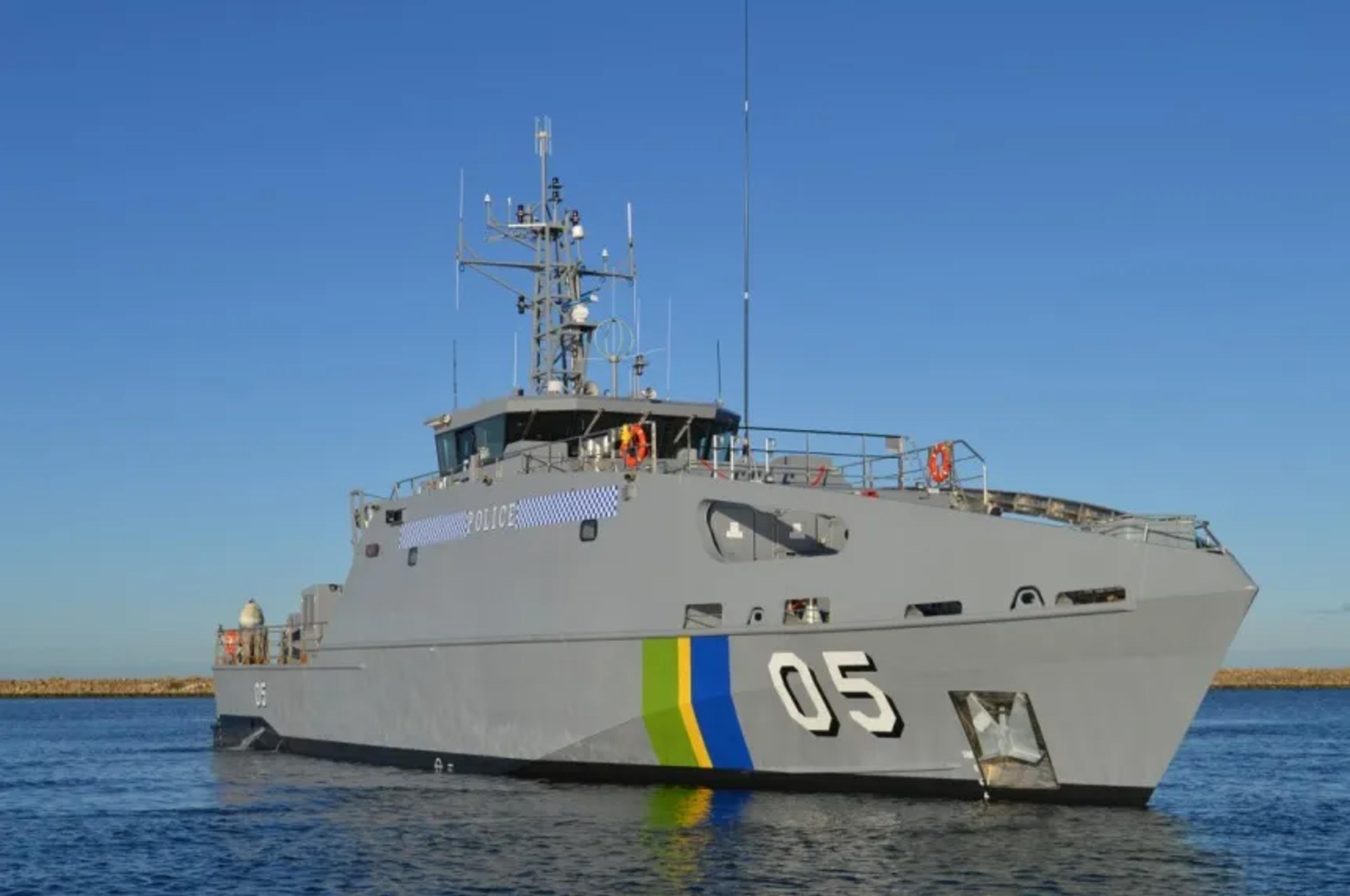
Pacific nations tighten maritime security as China signals greater presence in the region

Sāmoa Prime Minister bans nation’s only newspaper from government access

Anchored in history: Hōkūleʻa returns to Auckland after 40yrs

Tonga’s fuel crisis worsens as daily life is disrupted and pressure mounts for answers

Pacific nations tighten maritime security as China signals greater presence in the region

Sāmoa Prime Minister bans nation’s only newspaper from government access
After 40 years, Hōkūleʻa and sister canoe Hikianalia sailed back into Tāmaki Makaurau, Auckland, carrying decades of Polynesian voyaging knowledge and cultural revival.
Both canoes were welcomed into Ōkahu Bay on Tuesday with waiata, pūtātara (conch shell), and a pōwhiri led by Ngāti Whātua Ōrākei.
Around 200 people gathered along the shore as the double-hulled canoes appeared near Maungauika, North Head, their traditional silhouettes contrasting with the city skyline and a passing container ship.
The arrival marks 40 years since Hōkūleʻa’s 1985 landing in Aotearoa, New Zealand, a moment credited with sparking a Māori voyaging renaissance and strengthening ties between Hawai‘i and Aotearoa.
Hōkūleʻa and Hikianalia are part of a 43,000-nautical-mile circumnavigation of the Pacific, which began in Alaska in June 2023. The journey will take them through 36 countries, almost 100 indigenous territories, and 345 ports.
Each va’a sails with a rotating crew of about 12 people, swapping out roughly every four weeks, for a total of more than 400 crew members over four years.
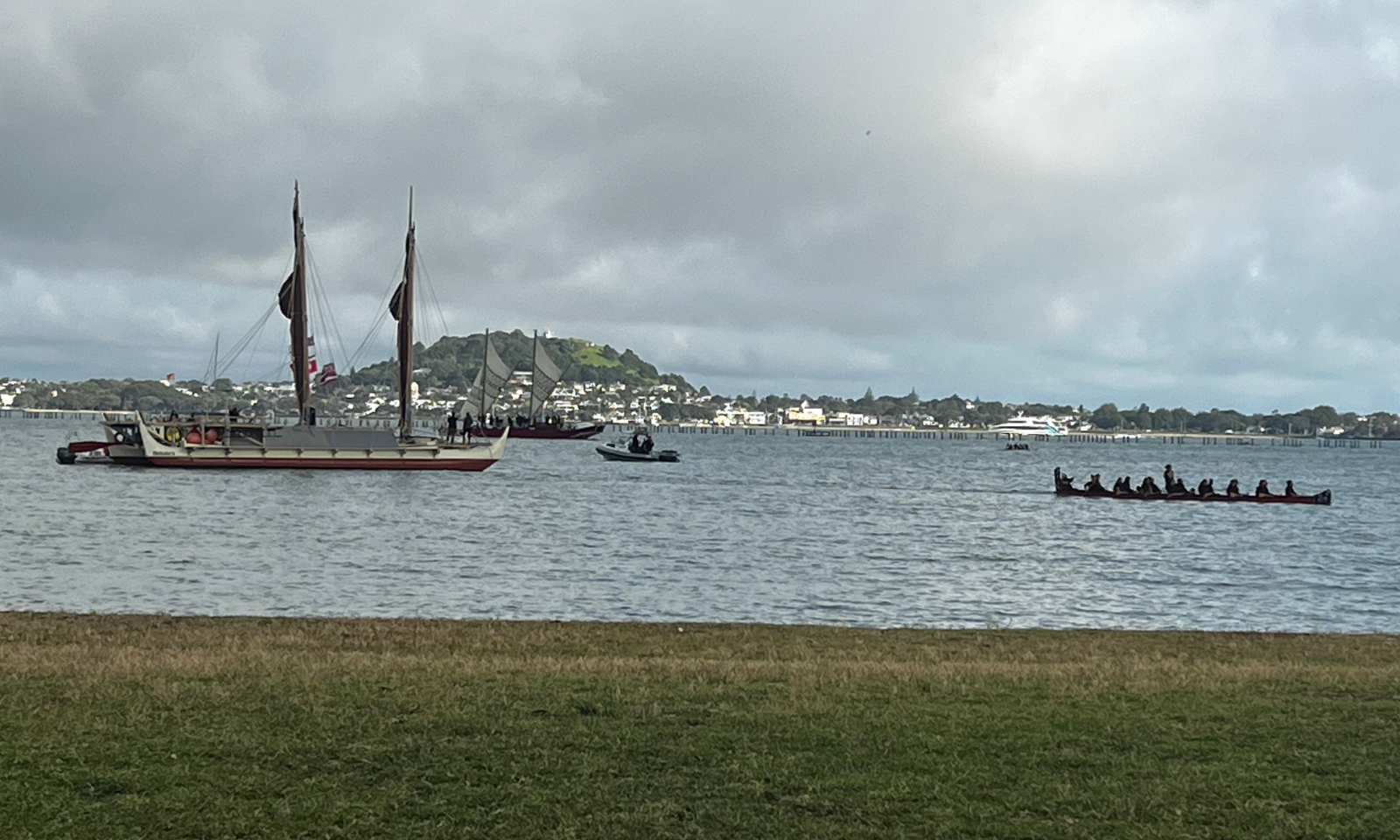
The Hōkūle'a and Hikianalia are met at Okahu Bay with waka from Ngāti Whātua Ōrākei. Photo/PMN News
Nikki Kamalu, a crew member and current captain of Hōkūleʻa, says the crew made the final leg from Waitangi over the weekend, anchoring at Motutapu before sailing into Tāmaki Makaurau at first light.
“Today turned out beautiful. No rain, though it was in the forecast,” she says. “It was a nice, easy, smooth transit… we managed to open our sail a little bit outside the bay just to show everyone.”
Kamalu, who has been part of the Polynesian Voyaging Society for more than 15 years, says she is proud to carry ancestral knowledge across the Pacific.
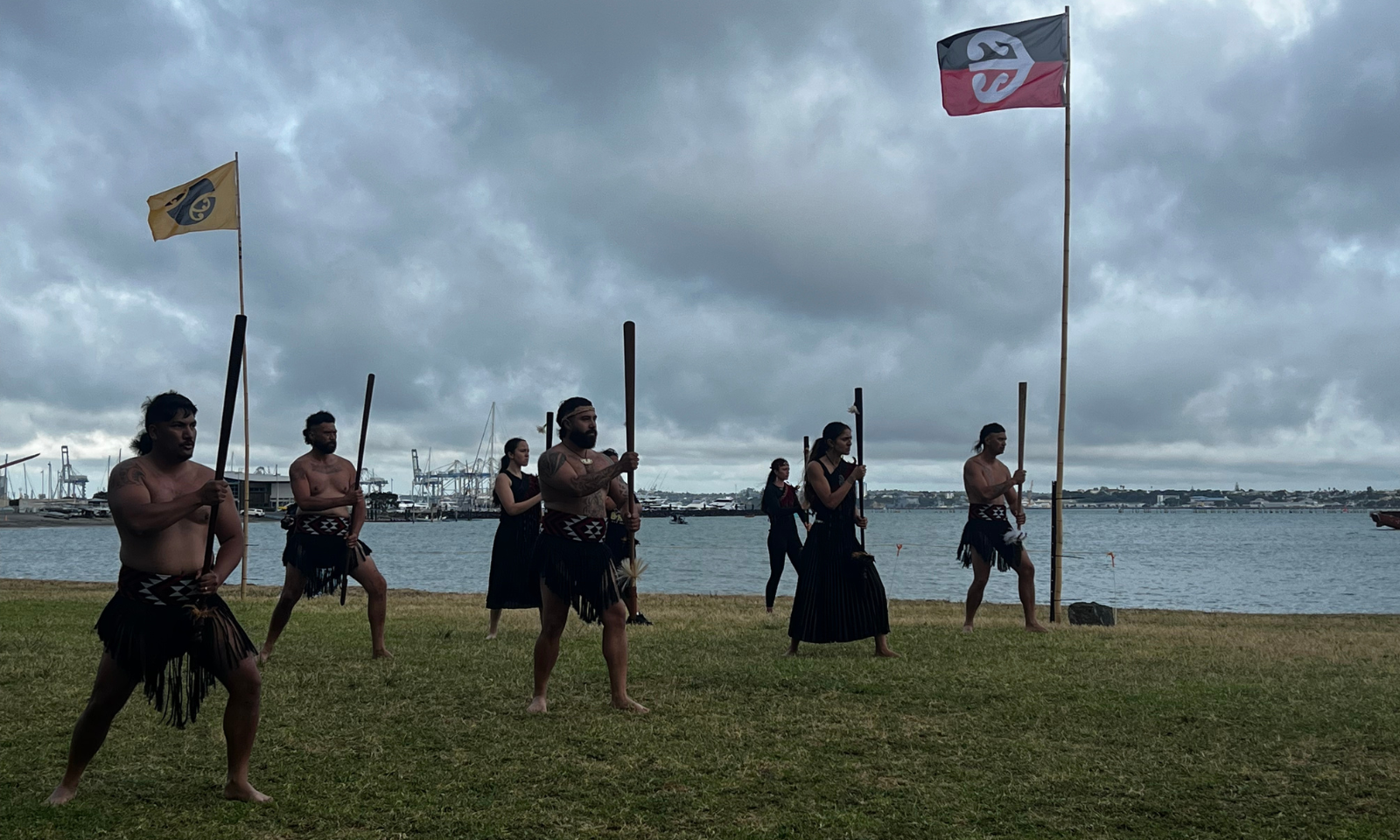
“It’s a huge responsibility. We know there’s a heavy weight on our shoulders,” she says. “We’re just trying to take on that responsibility, be there to help others after us, bring them up, keep this culture growing, thriving, perpetuating.”
For Kamalu, voyaging is closely connected to the Hawaiian language and cultural revival she experienced growing up.
“Hōkūleʻa is the icon of the Renaissance,” she says. “When I was young, Hawaiian was almost a dying language… it was not even spoken in schools for at least one or two generations. I was one of those privileged children brought up in the Hawaiian language programmes. Years later, I’m so proud and grateful.”
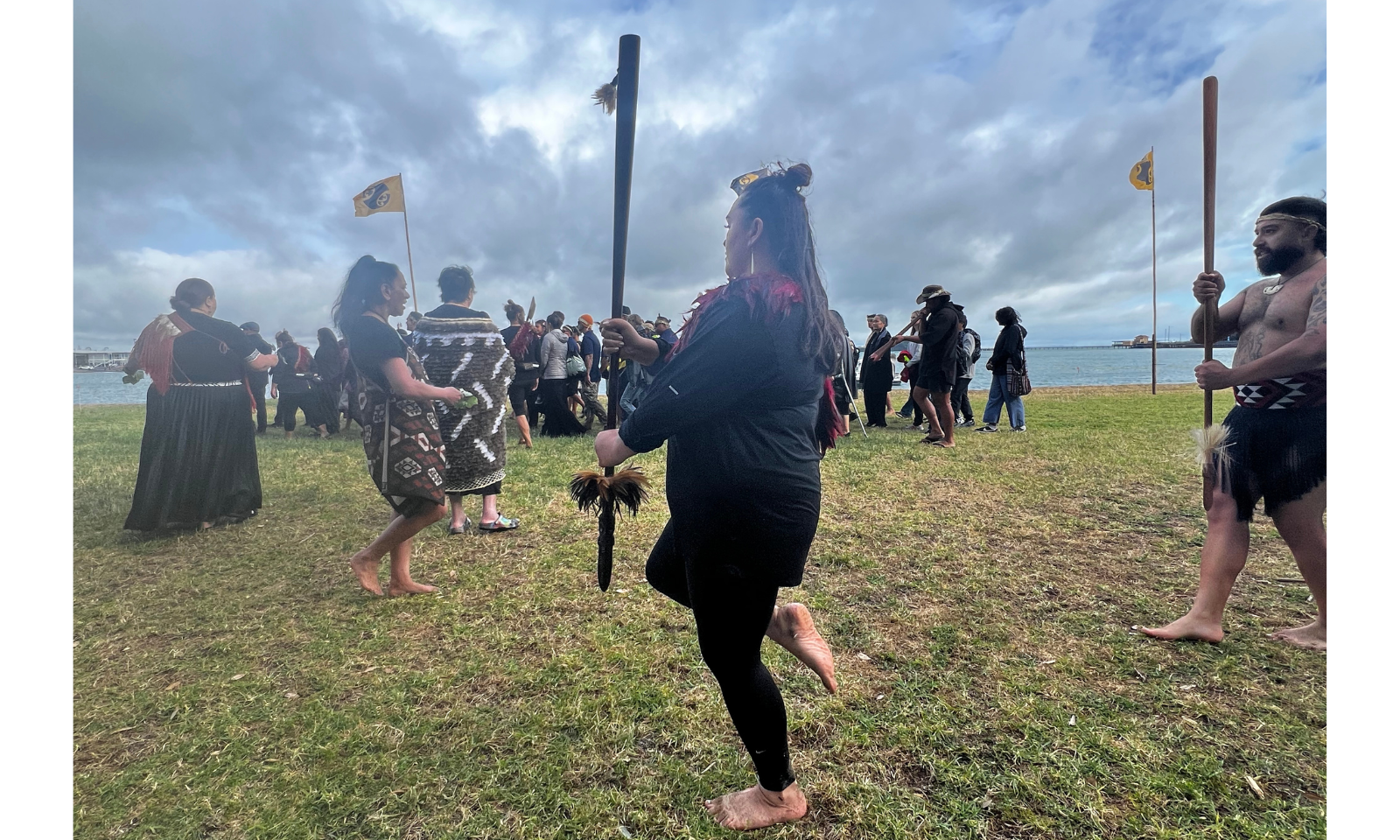
Waiata and pūtātara (conch shell) greeted the Hōkūle'a crew in Auckland. Photo/PMN News
Toeolesulusulu Damon Salesa, Vice-Chancellor of Auckland University of Technology, was among the welcome group alongside local iwi. He says seeing the va‘a return to Ōkahu Bay carries deep cultural significance, coinciding with Auckland hosting the World Indigenous Peoples’ Conference on Education (WIPCE).
Salesa, who grew up near Okahu, remembers the presence of three ocean-voyaging canoes during his childhood.
“This is a very special occasion… the team has brought Hōkūleʻa down to the Waitematā for the first time in 40 years,” he says. “What a beautiful confluence of the waters.
“It’s emotional. As a scholar, it has a very deep meaning to come in here at an ancient anchorage and be part of this special welcome. You felt it”

Toeolesulusulu Damon Salesa reflects on the significance of the event. Photo/PMN News
Generational knowledge
Lohiao Paoa joined the crew in May in Pape’ete, Tahiti, and has taken on different roles on board.
Paoa says voyaging is a legacy passed down through his family, and now he is able to share that knowledge with others.
“In the last few days, I served as captain on Hikianalia from Waitangi to Ōkahu, and before that I was a safety officer and watch captain from Rarotonga to Waitangi.
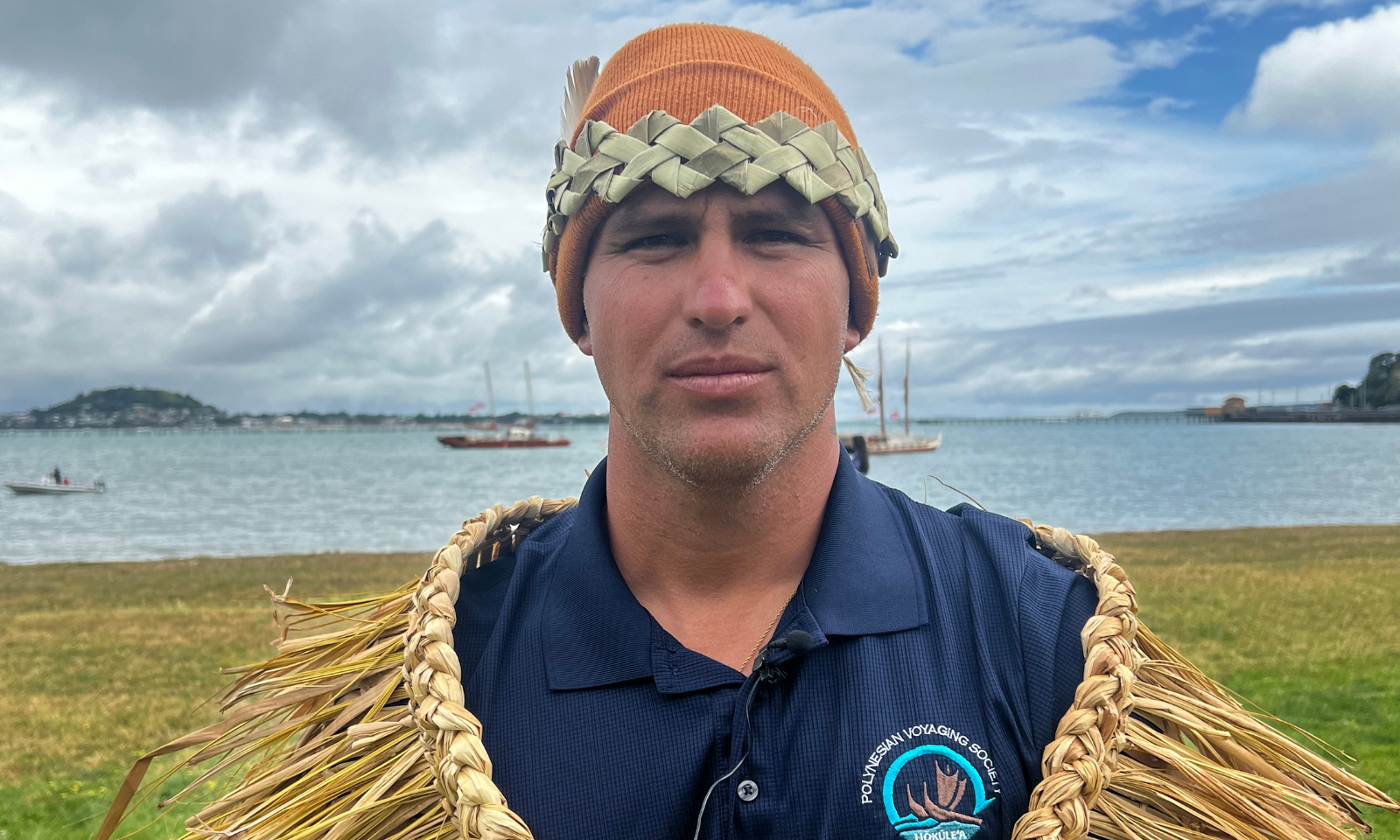
Lohiao Paoa captained the Hikianalia from Waitangi. Photo/PMN News
“My father was a navigator captain of Hōkūleʻa, and his uncles taught him how to sail, and he taught me how to sail, so I’m just carrying it on.
“The crew makes the captain. Having the senior captains there to help me, and then being able to teach some of the younger crew at the same time, that was the most difficult but the most rewarding.”
Paoa, who works as a firefighter in Maui County, says the long voyage from Hawai‘i to Aotearoa is both challenging and rewarding, and credits his ‘ohana back home for making his participation possible.

Speeches and traditional gifts are exchanged, as Hōkūle'a is anchored nearby. Photo/PMN News
Looking ahead
On Wednesday, Nainoa Thompson, Chief Executive of the Polynesian Voyaging Society, will speak at WIPCE about the 40-year voyaging relationship between Hawai‘i and Aotearoa.
Hōkūleʻa and Hikianalia will remain in Aotearoa for six months to wait out the South Pacific cyclone season, which is from November to April. During this time, both canoes will undergo dry-dock repairs and maintenance.
They are scheduled to depart in April or May 2026, sailing to Tonga, Sāmoa, and American Sāmoa before continuing to Melanesia and Micronesia as part of the Moananuiākea Voyage.
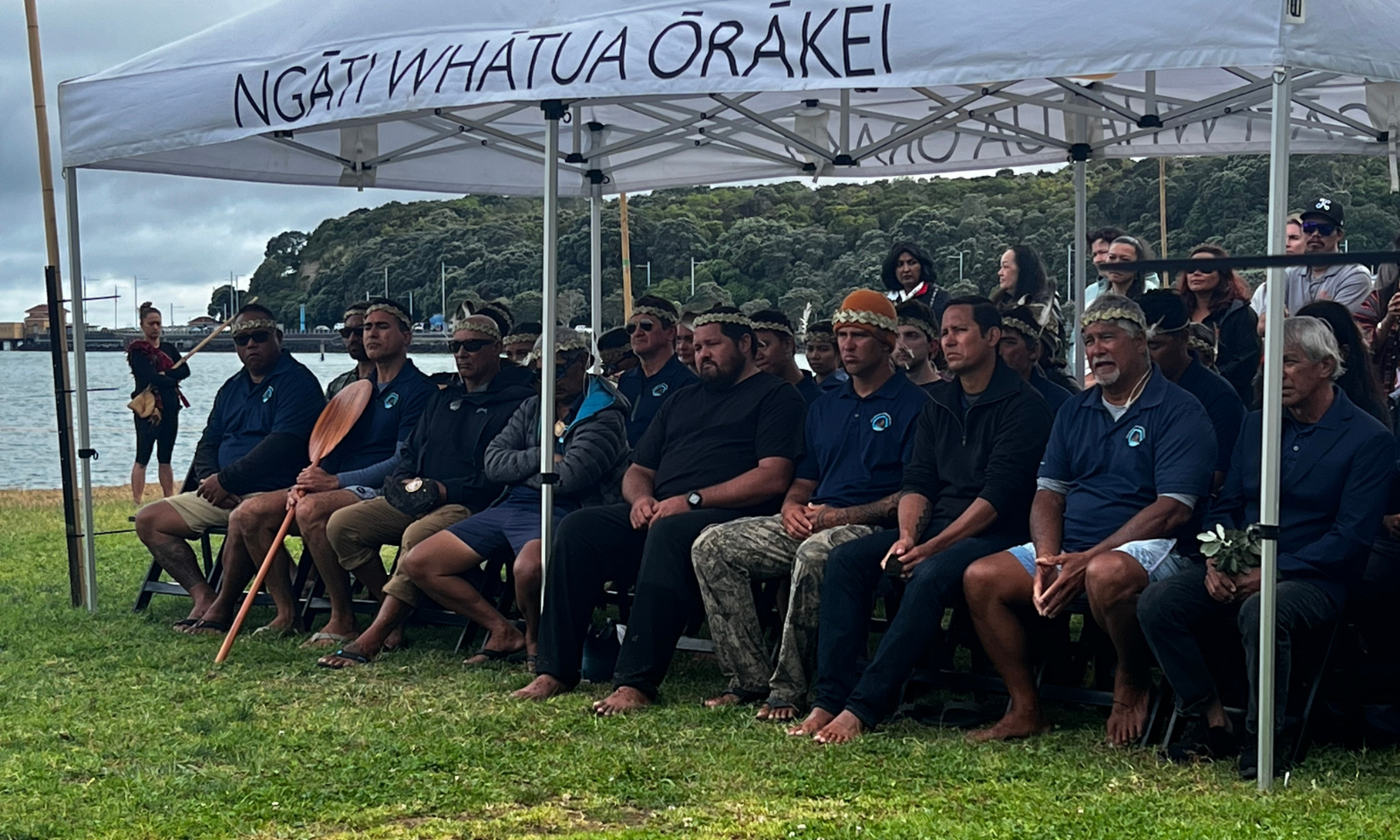
Crew members, including Lohiao Paoa (fourth from the right), of the Hikianalia and Hōkūle'a are greeted in Auckland. Photo/PMN News
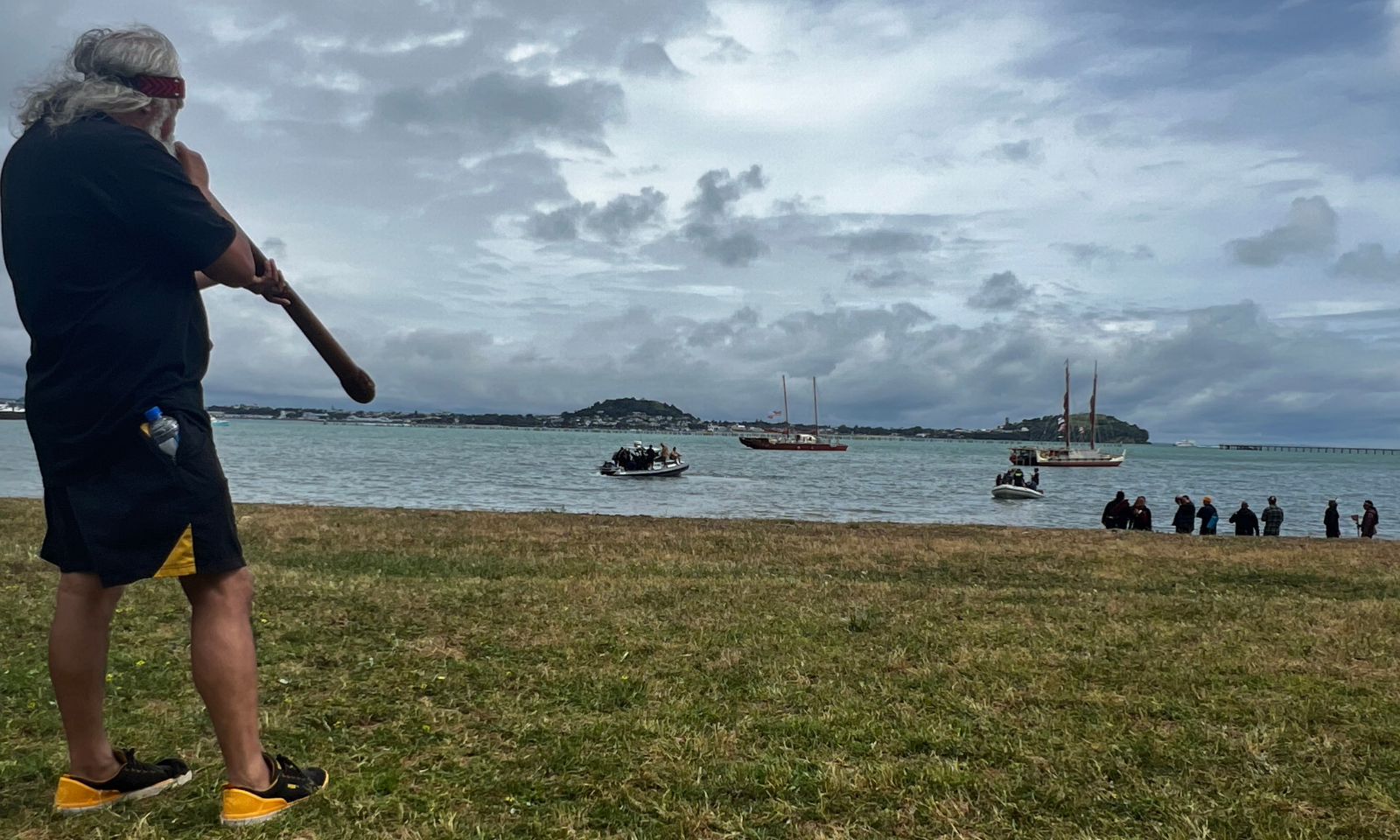
The pūkaea (wooden horn) heralded the departure of the Hōkūle'a crew members. Photo/PMN News